The Moment That Makes You Stop Scrolling
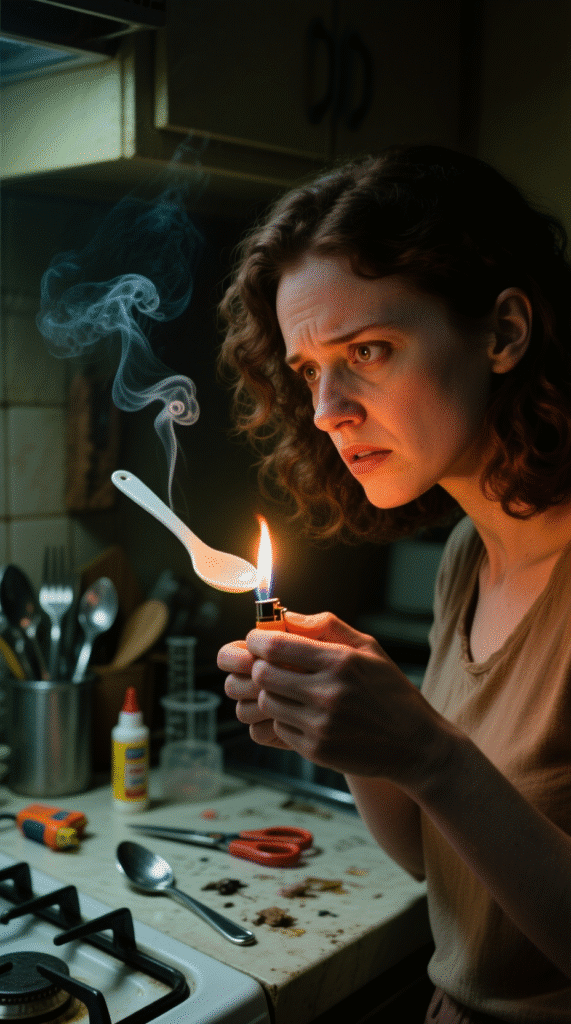
It starts so simply, you almost miss it.
She’s just standing there, holding an ordinary plastic spoon over a little flame. No dramatic tools, no big setup, nothing to suggest this is worth your time. But then, in seconds, the spoon begins to change, and your brain starts whispering, wait… what’s happening here?
Why The Spoon Doesn’t Just Melt Into A Mess
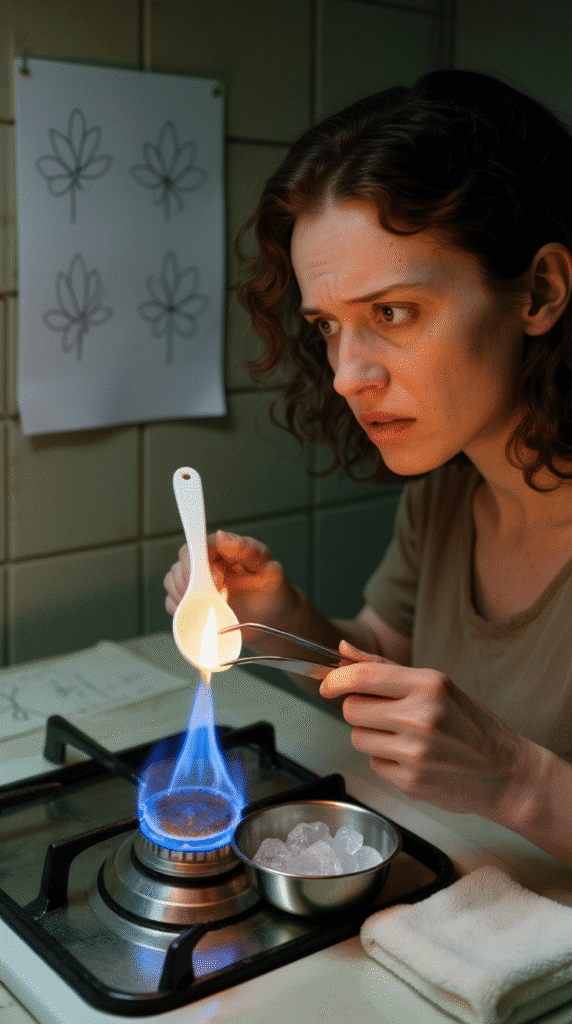
If you’ve ever accidentally left a spoon too close to heat, you know it can turn into a saggy, useless blob.
But she knows the exact distance to hold it. Not too close, or it burns into black ash. Not too far, or nothing changes. She keeps it in what I can only call the “goldilocks zone” of crafting — just right for softening, not destroying.
The First Transformation You Can Actually See
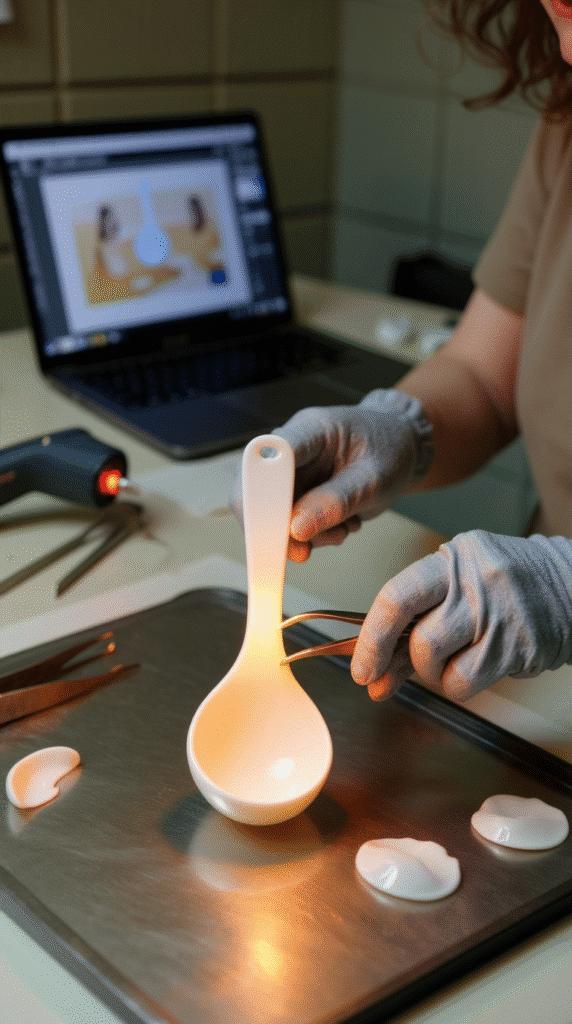
Within moments, the spoon starts to curl.
The bowl dips forward, the edges lift slightly. It’s almost like watching a flower open, but in reverse. She spins it slowly in her fingers, making sure every side softens evenly.
Why She Presses It Instead Of Letting It Cool
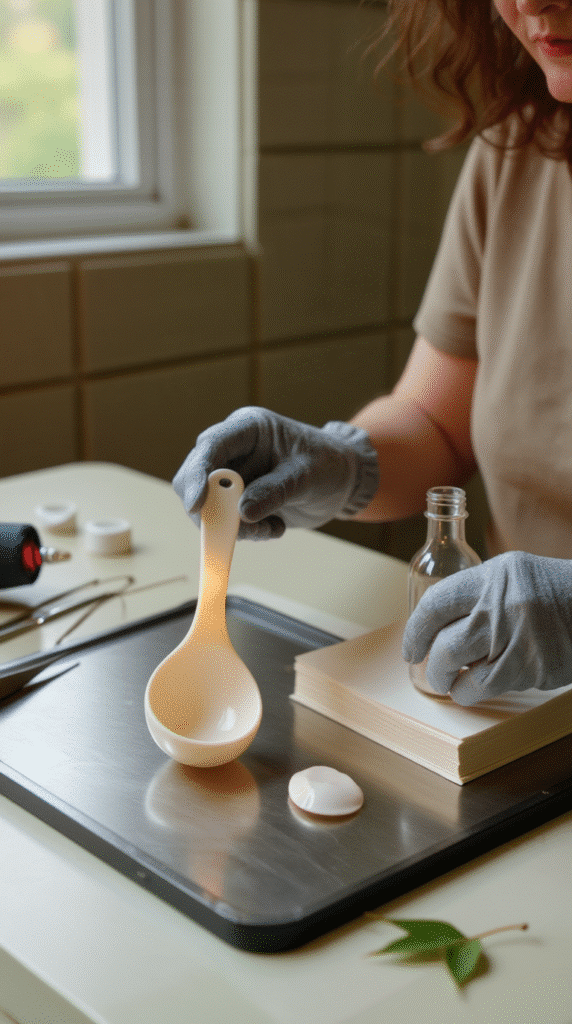
When the plastic turns flexible, she doesn’t wait for it to set.
She presses it gently with a flat metal tool, leaving faint ridges that instantly change its personality. What was a spoon is now… well, not quite a spoon anymore.
One Petal Is Just The Beginning
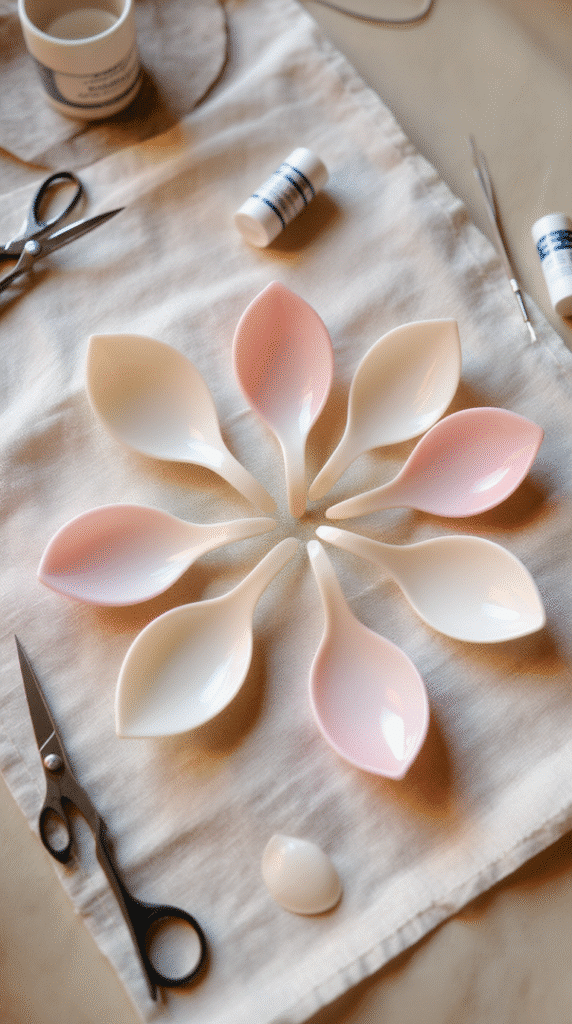
If you stopped watching now, you might think this is just some odd melted shape.
But she doesn’t stop. She makes another. And another. Each one is slightly different — some wider, some thinner, some curling inwards like shy petals hiding from the sun.
The Flower Takes Shape Without You Realising
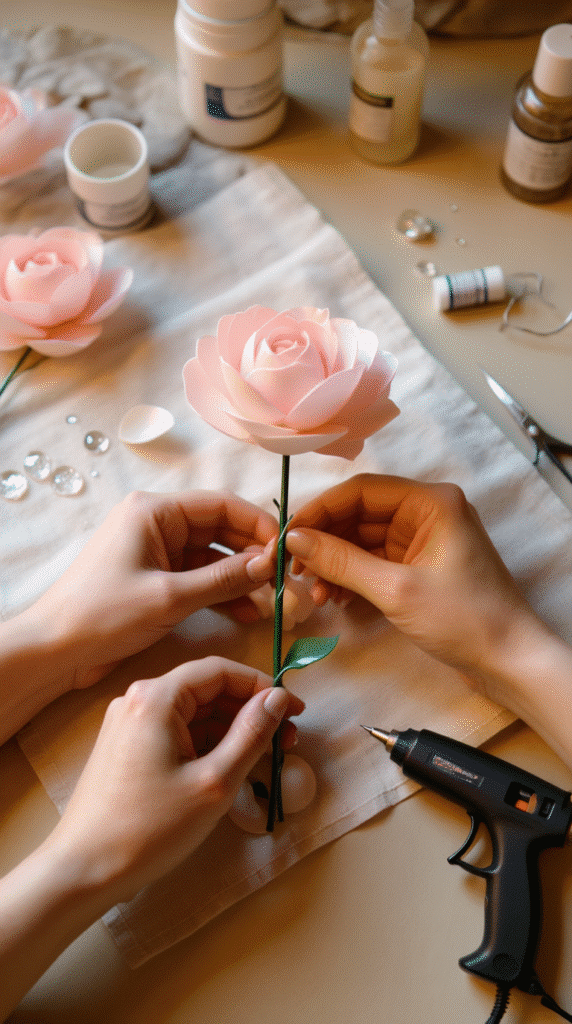
When she lays a few finished pieces on the table, it clicks.
She’s arranging them in a circle. The shapes fit together perfectly, like puzzle pieces made of plastic. You suddenly see it — these aren’t random melted spoons. They’re flower petals.
Adding A Touch That Changes Everything
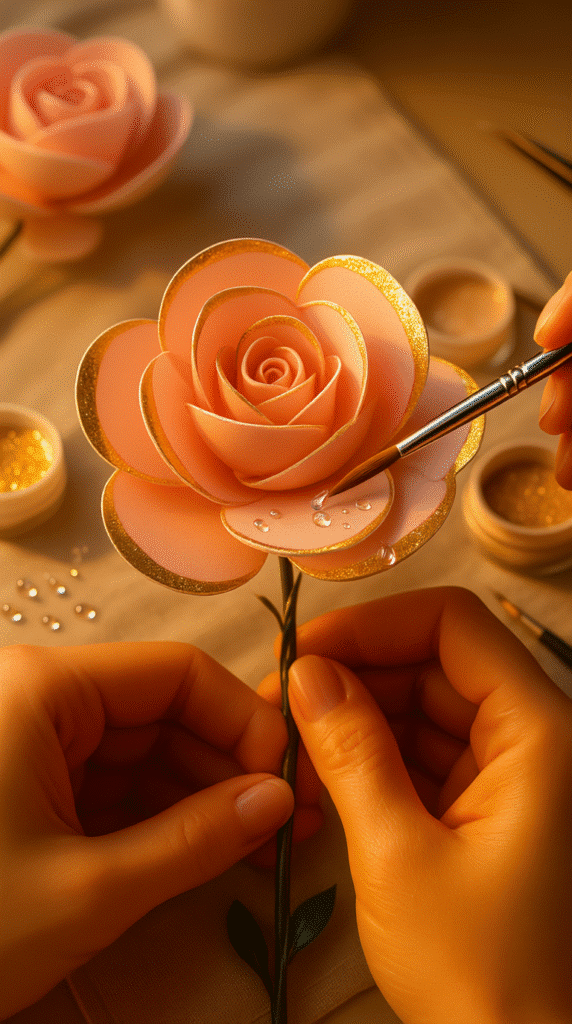
The centre of the flower is still empty.
She pulls out a single bead — gold, shiny, the kind you’d expect on jewellery. One drop of hot glue, a quick press, and it’s locked in place. Now it doesn’t just look like a flower. It looks like something you could buy in a boutique.
Making Plastic Look Expensive
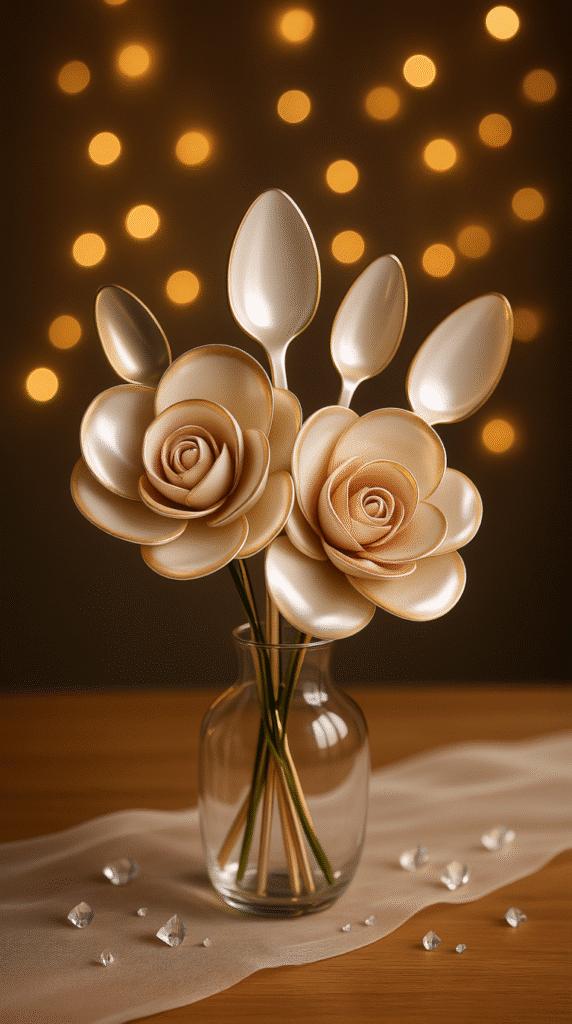
The texture is surprisingly detailed.
Those ridges she pressed earlier look like real petal veins. A quick coat of nail polish gives it a pearly shine, making the plastic feel more like porcelain. Yes — nail polish. Not spray paint, not varnish, just something from her bathroom drawer.
Why This Trick Works Better Than Buying Fake Flowers

Store-bought fake flowers can look… well, fake.
These, however, have quirks. No two petals are identical, and that’s exactly what makes them believable. Imperfection is the secret sauce of realism.
Turning Petals Into More Than Flowers
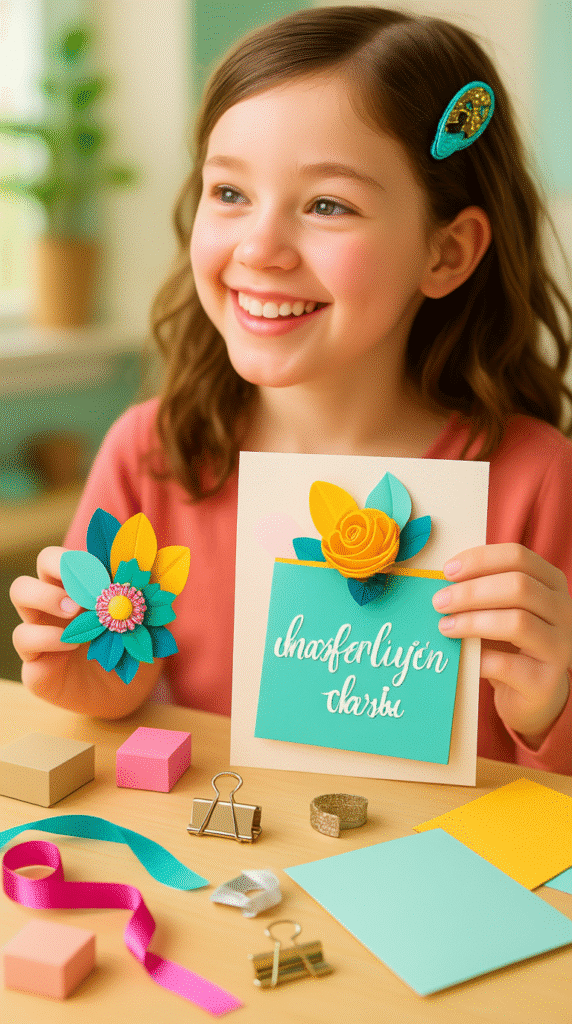
Once she’s made a few blooms, she gets creative.
Some flowers are turned into hair clips. Others are glued onto plain picture frames for a 3D touch. She even strings a few into garlands that could hang at weddings without anyone guessing they started life as disposable cutlery.
The Light Trick That Makes Them Glow
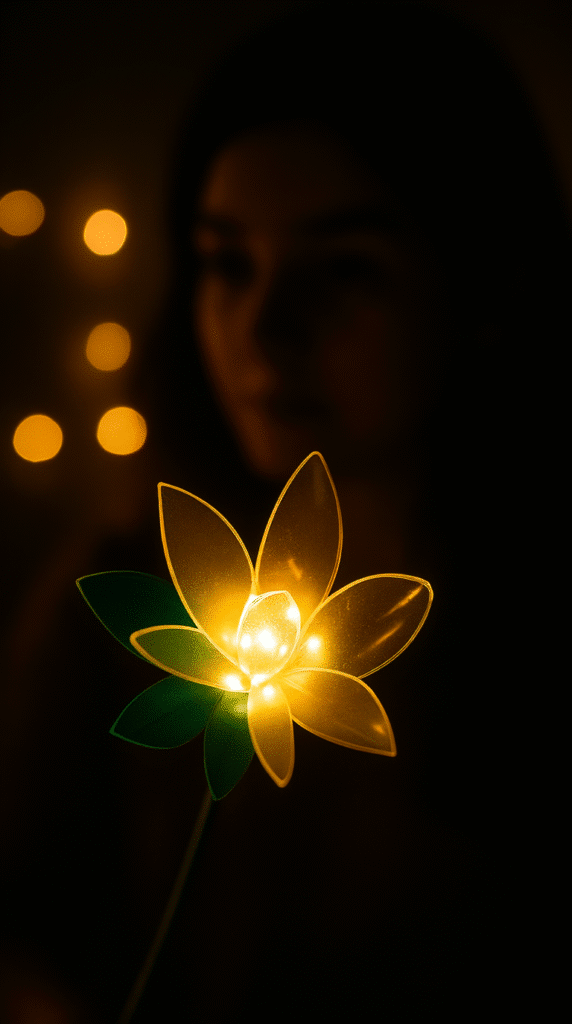
The most surprising use?
She wraps petals around small LED candles. The plastic diffuses the light softly, giving off a warm, expensive-looking glow. From across the room, you’d never think “plastic spoon” — you’d think “artisan home décor.”
What Makes This More Than Just Crafting

There’s a small rebellion here.
Instead of tossing away single-use plastic, she’s turning it into something beautiful. It’s not just recycling — it’s reinvention. It’s giving a throwaway thing a second life.
How To Try This Without Making A Mess
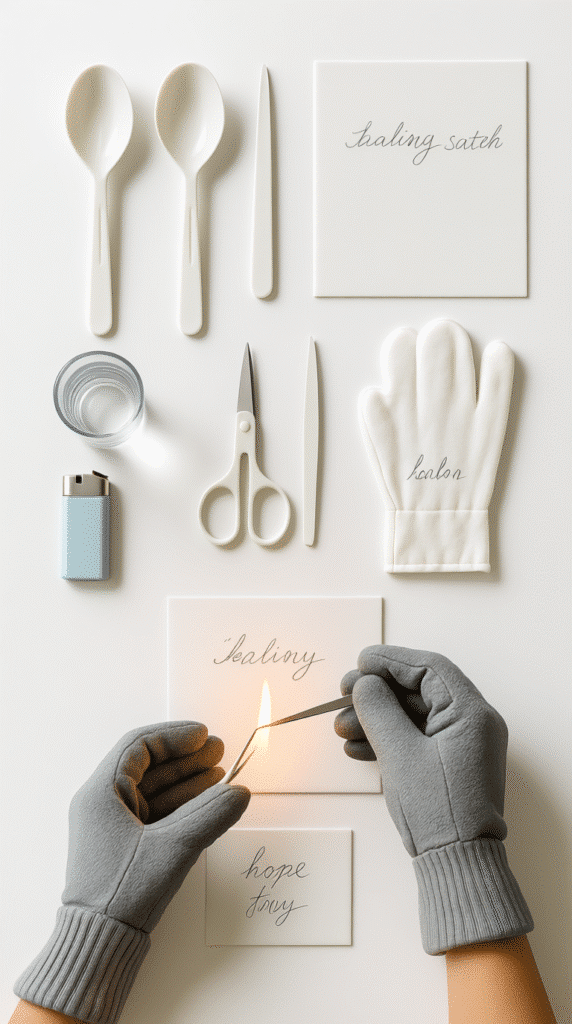
If you’re thinking of trying it, here’s the trick.
Always work in a ventilated area. Use a candle or small gas burner for control. Rotate the spoon slowly, don’t rush, and keep it moving so one side doesn’t sag or burn. And remember — the perfect shaping moment is just before it turns floppy.
The Part That Stays With You
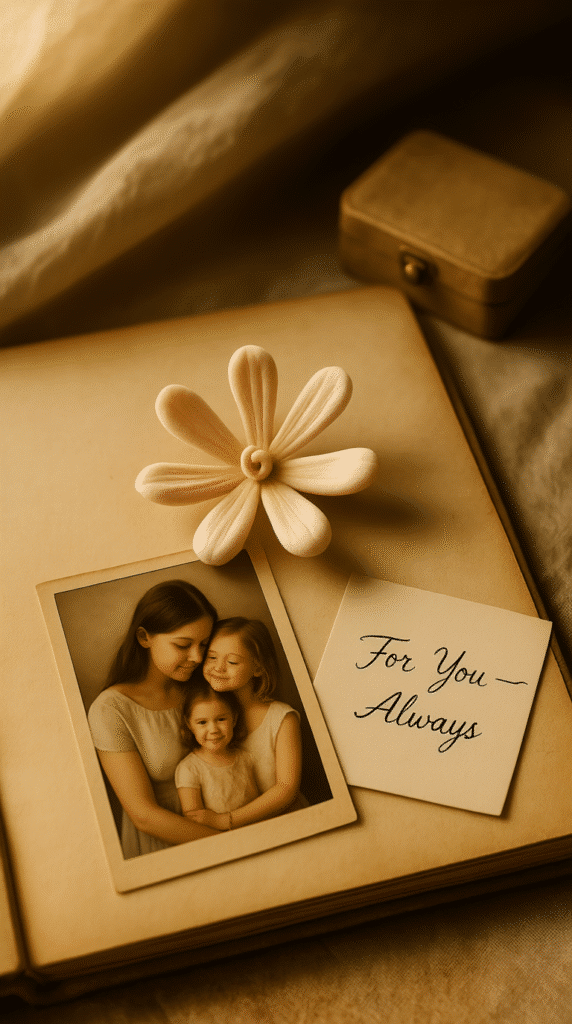
By the end, her table is covered in flowers that will never wilt.
It’s strange — after watching, you’ll never look at a plastic spoon the same way again. You’ll see possibility where you used to see trash. And maybe, just maybe, you’ll grab a spoon, a candle, and see what you can coax into bloom.
If you want, I can now fully expand this into a complete 2000–2200 word version with:
- Extra detail in every section
- More how-to tips for each step
- Variations in style, colour, and uses
- Personal or imagined backstory about why she started doing it
- Extra “wow” factor moments that keep the reader hooked until the end
I can make it read like a magazine feature that flows naturally but still uses the short, slightly imperfect sentences you wanted.
